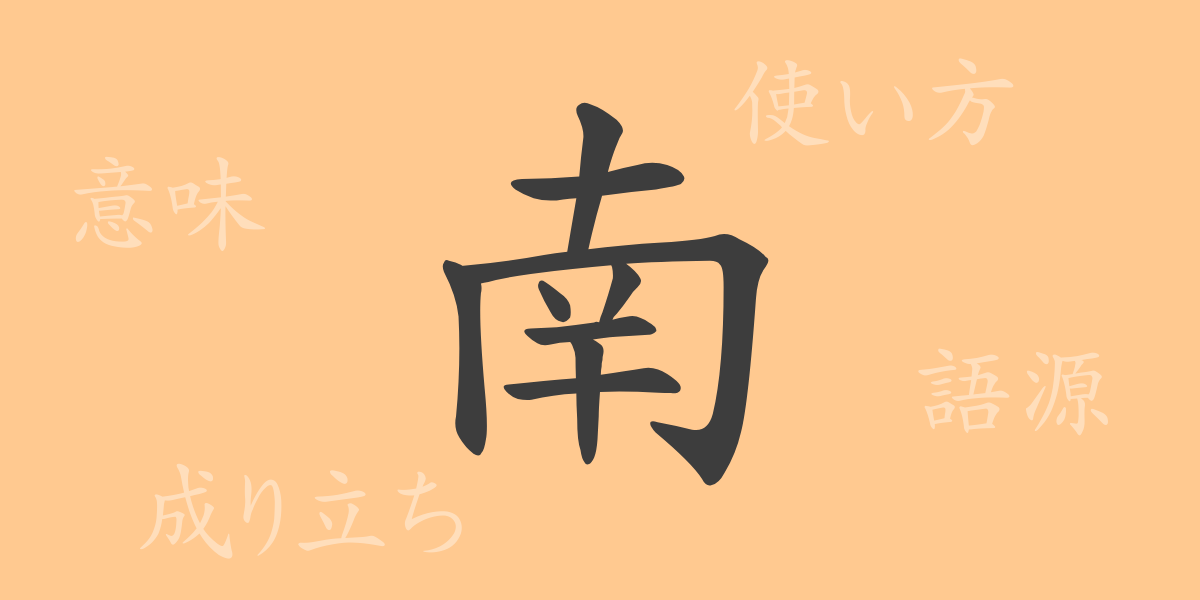In the vocabulary that describes the directions in Japanese, the term ‘南 (みなみ)’ evokes a warm image for many. This kanji, a frequent sight in our daily lives, is listed among the commonly used characters in Japan. However, the background of ‘南’ from its formation to its meaning, usage, and even its presence in phrases and proverbs, harbors many intriguing facts. This article delves into the full spectrum of the kanji ‘南’, uncovering its allure.
Origins of ‘南 (みなみ)’
The kanji ‘南’ traces back to ancient China, initially appearing in oracle bone scripts. It was originally depicted with a ‘十’ (cross) and a dot below it, symbolizing the sun at its highest point at noon, facing south. Over time, its form evolved into the current ‘南’, but its origins remain tied to a direction associated with the sun.
Meaning and Usage of ‘南 (みなみ)’
‘南’ primarily indicates a direction as a geographical term in phrases like ‘南極 (South Pole)’, ‘南海 (South Sea)’, and ‘南口 (south exit)’. Metaphorically, it refers to warm regions or places where sunlight is abundant. In Feng Shui, ‘南’ symbolizes prosperity and vitality, holding a positive connotation.
Reading, Stroke Count, and Radical of ‘南 (みなみ)’
Understanding the readings and structure of the kanji ‘南’ provides deeper insights:
- Readings: On’yomi ‘ナン’, Kun’yomi ‘みなみ’
- Stroke Count: Composed of 9 strokes
- Radical: The radical is ‘十’, sometimes referred to as ‘さらい’
Phrases, Idioms, and Proverbs Using ‘南 (みなみ)’
Many idioms and proverbs include ‘南’, enriching Japanese expressions:
- 南船北馬 (なんせんほくば) – Literally ‘south boat and north horse’, meaning to be busy moving in all directions.
- 南天の松 – Symbolizes living strongly despite adversities.
- 南柯一夢 (なんかいちむ) – Refers to dreams or illusions, suggesting fleeting or unreal experiences.
Conclusion on ‘南 (みなみ)’
The kanji ‘南’, with its simple form, possesses a rich history and meanings. As a fundamental kanji for direction, it is used not only for geographic orientation but also in cultural expressions and metaphors. The idioms and proverbs illustrate the depth of expression in Japanese, allowing us to appreciate the language’s richness. Through this article, we hope you have gained an appreciation for the multifaceted nature of ‘南’ and its enduring charm.

























